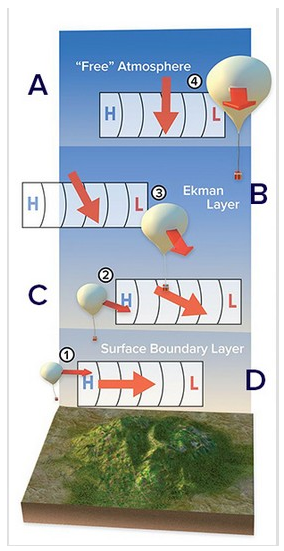How does a greenhouse work, and why is the analogy of the earth's atmosphere to a greenhouse imperfect?
What will be an ideal response?
Answer: Greenhouses are made primarily of glass, which is transparent to incoming shortwave radiation but opaque to outgoing longwave radiation. The glass therefore allows in more radiation than is allowed to escape, causing the temperature inside the structure to be warmer than outside. In that regard, a greenhouse is similar to the atmosphere, which also transmits most of the incoming solar energy but absorbs the vast majority of longwave radiation emitted upward by the surface. The analogy breaks down, however, when we incorporate the effect of convection. A greenhouse not only reduces the loss of energy by longwave radiation but also prevents the loss of sensible and latent heat by convection. In contrast, the greenhouse gases (those that absorb longwave radiation) of the atmosphere do not impede the transfer of latent and sensible heat. Thus, it would be more accurate if the term "greenhouse effect" were replaced by "atmospheric effect."
You might also like to view...
Which of the following best represents the geostrophic wind in the northern hemisphere?

A) A
B) B
C) C
D) D
An atom with a charge of +1 has an atomic number of 6 and a mass number of 14. How many neutrons does it have?
A) 14 B) 6 C) 8 D) Cannot be determined from the information given
A substance that cannot be broken down into other substances by ordinary chemical methods is a(n)
A. molecule B. crystal C. compound D. element
The primary purpose of a map is:
a. spatial and locational communication b. navigation c. realistic depiction of Earth's -boundaries d. data collection